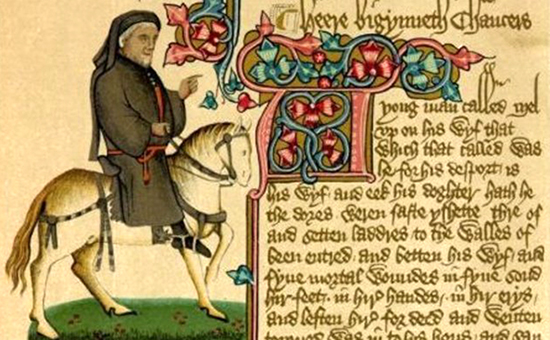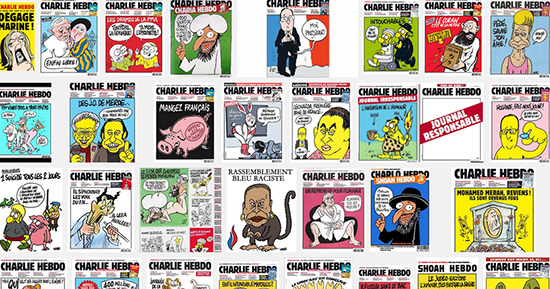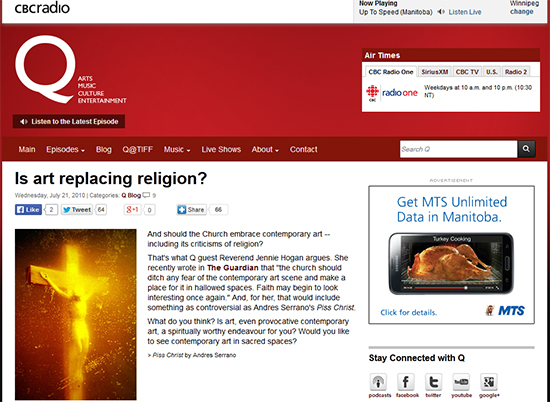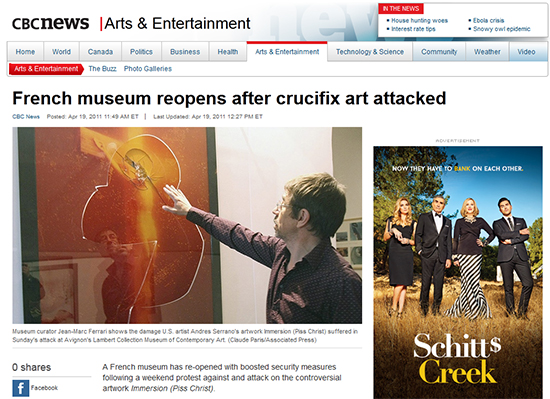Thu 22 Jan 2015
Chaucher objects to descriptions of his home as cramped, dingy, and foul smelling
Posted by Mathew Block under Literature, Main
No Comments

Perhaps you’ve heard of Paul Strohm’s recent book The Poet’s Tale: Chaucer and The Year that Made the Canterbury Tales. And perhaps you’ve read the picture he paints of Chaucer’s living quarters during that time.
Noisy. Cramped. Dingy. And foul smelling. These are the primary descriptors we can apply to the scene, according to reports. The Spectator has a lovely summary of it all.
“Chaucer occupied a single bare room of about 16’ x 14’. The only natural light would come from ‘two (or at most four) arrow slits’ tapering through the five-foot thickness of these walls (the towers were a defensive feature) to an external aperture of four or five inches. ‘Light, even at midday, would have been extremely feeble. Arrangement for a small fire might have been possible. Waste would be hand-carried down to the ditch that lapped against the tower and dumped there.’
You can imagine how cosy it was in winter. And the noise! Chaucer slept directly over the main London thoroughfare. Every morning at first light the portcullis would go rattling up, and thereafter ‘the creak of iron-wheeled carts in and out of the city, drovers’ calls, and the hubbub of merchants and travellers pressing for advantage on a wide but still one-laned road, probably made sleep impossible, five-foot walls or no five-foot walls’. That’s if he could hear anything over the incessant bong-bonging of bells from each of the three churches within a couple of hundred feet of his front door.
Meanwhile ‘a stench wafted from the open sewer known in its northern extension as Houndsditch that ran (or festered) just outside the city wall’; Houndsditch was so called because of the many dead dogs dumped there. In addition to rotting garbage, dead dogs, and faecal waste from the next-door Holy Trinity Priory (‘a populous foundation’, Strohm tells us jauntily), you’d find ‘the occasional human corpse’. ‘And then,’ Strohm adds with excellent tact, ‘there was the matter of felons’ and traitors’ rotting heads…’ This was an occupational hazard of living in a gatehouse tower.”
It provides some remarkable insight on the conditions Chaucer had to put up with as he wrote his remarkable poetry.
Still, not everyone is pleased with the description Strohm is painting of Chaucer’s home. And surely the most significant person disputing the account is… Chaucer himself?
“FOR THE RECORD MY PLACE IN ALDGATE DOTH SMELLE GREAT AND YS WELL APPOINTED WYTH IKEA FURNITURE, THANKE YOW,” Chaucer (ahem) tweeted earlier today. “Herkeneth, goode folk of @ProfileBooks and @VikingBooks – MY PLACE AT ALDGATE YS LOVELYE AND DOTH NAT SMELLE BAD. YT YS COZY NAT CRAMPED.”
FOR THE RECORD MY PLACE YN ALDGATE DOTH SMELLE GREAT AND YS WELL APPOINTED WYTH IKEA FURNITURE, THANKE YOW. #chaucerstale #paulstrohm #lies
— Chaucer Doth Tweet (@LeVostreGC) January 22, 2015
Seriously, the person (people?) behind Chaucer Doth Tweet—ie, “Le Vostre GC”—is doing great work today. Some more examples:
“YF MYNE APARTMENT YN ALDGATE WERE REALLYE THAT BAD HOW KOUDE ICH SLEEPE YNOUGH TO WRITE ALL THOSE DREAM VISIOUNS?”
“MYNE APARTMENT YN ALDGATE NYS NAT ‘CRAMPED’ – ICH AM A PIONEER OF THE ‘TINYE HOUS’ MOVEMENT.”
I’d be remiss if I didn’t also note here that “Geoffrey Chaucer Hath a Blog.” It is, appropriately enough, HouseofFame.Blogspot.ca.
———————





